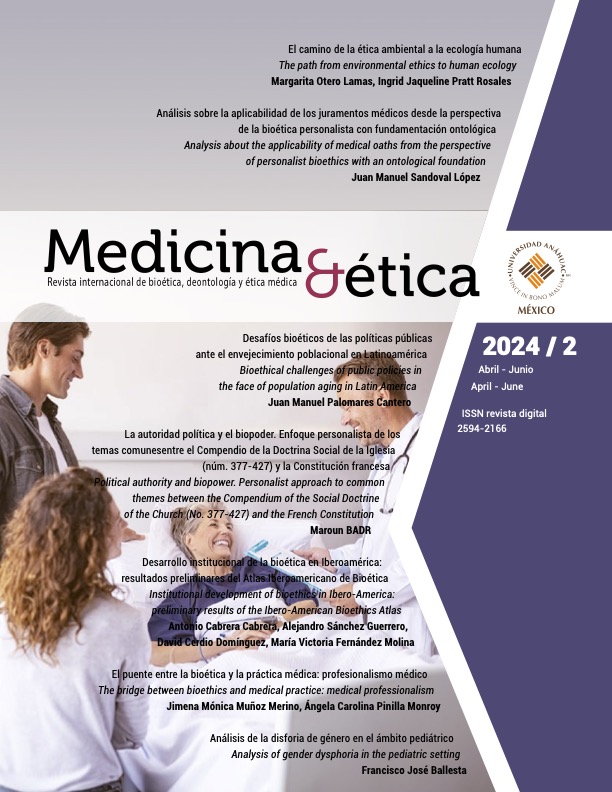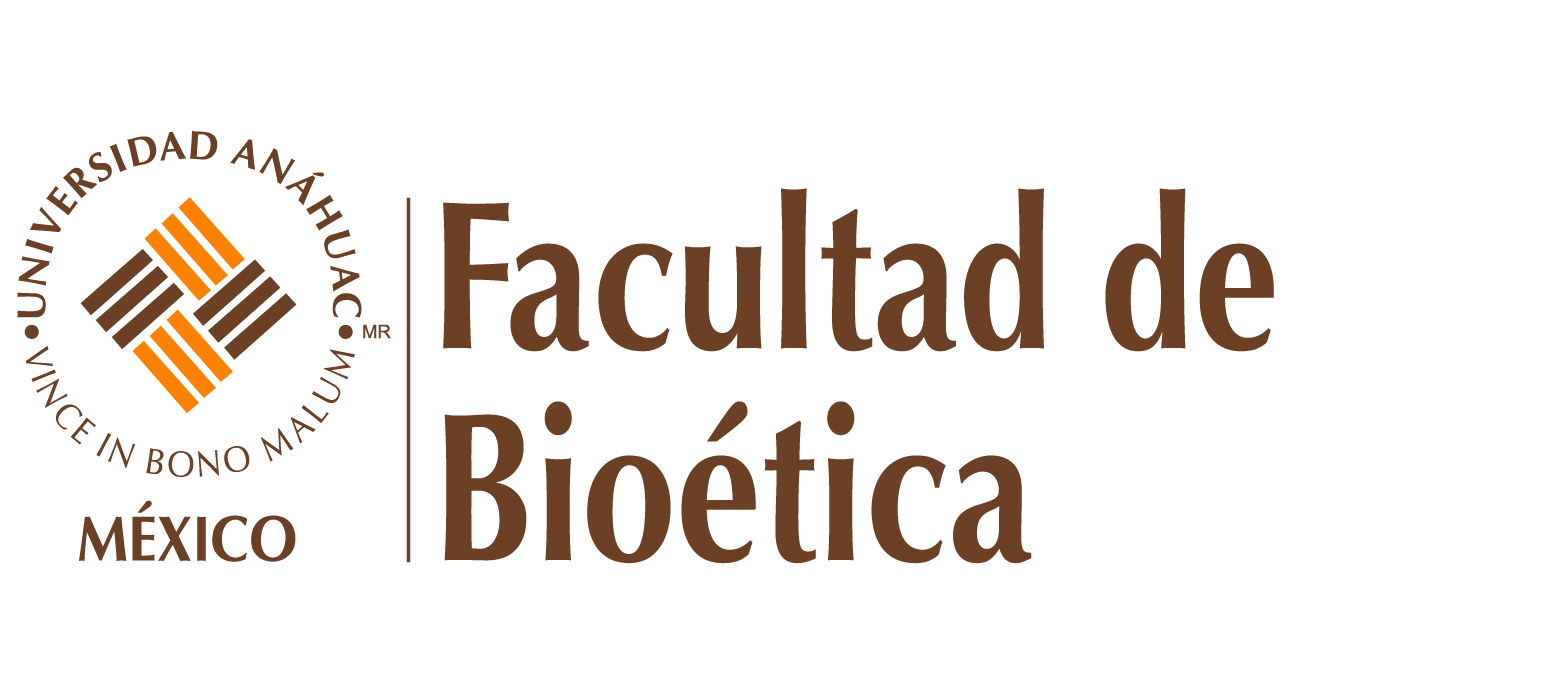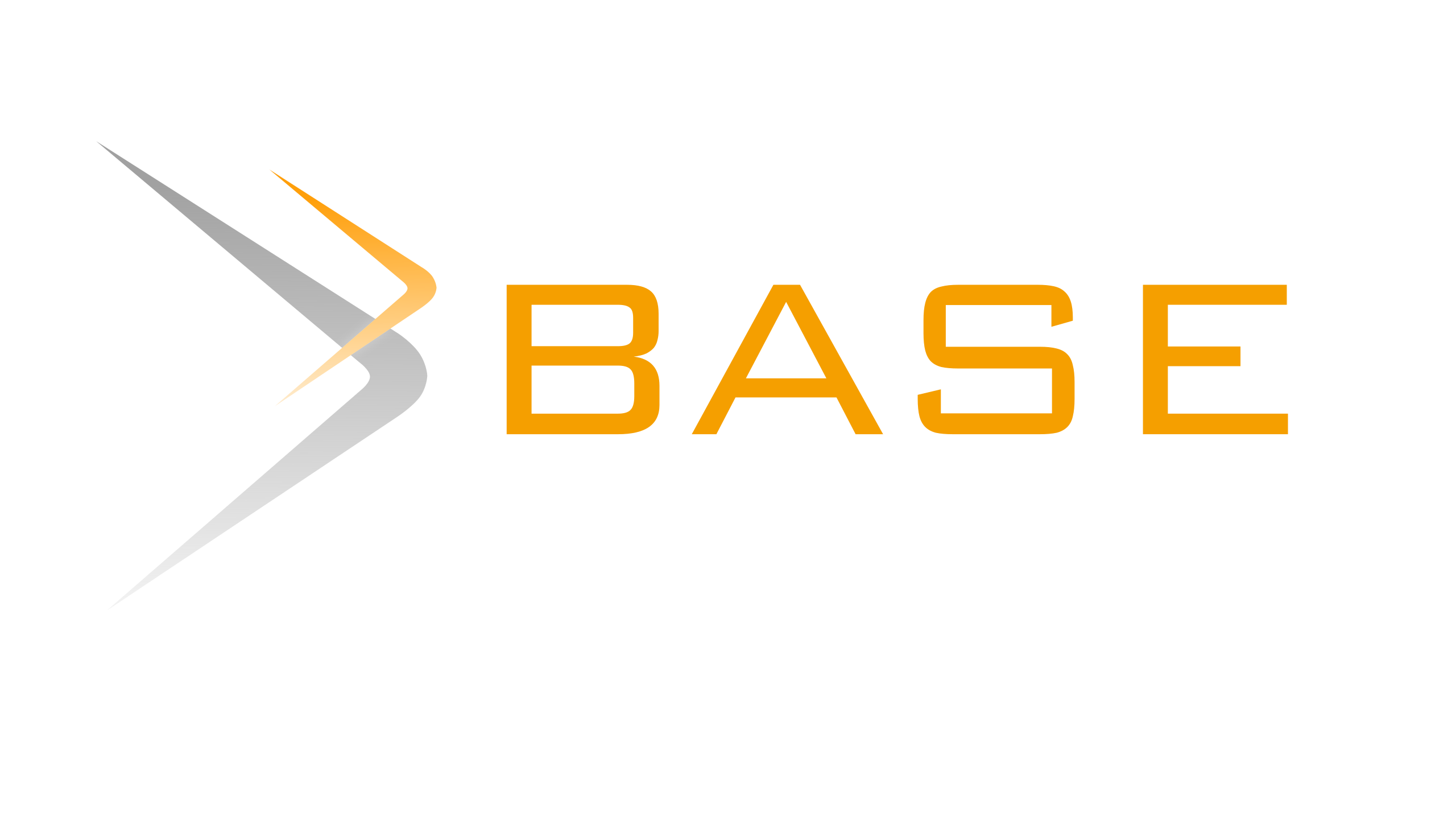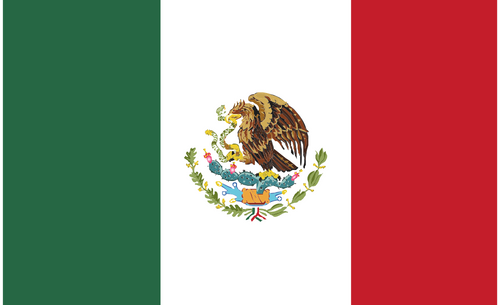Desarrollo institucional de la bioética en Iberoamérica: resultados preliminares del Atlas Iberoamericano de bioética
DOI:
https://doi.org/10.36105/mye.2024v35n2.05Palabras clave:
Observatorio, Institucionalidad, VinculaciónResumen
Este trabajo presenta los resultados preliminares obtenidos en la conformación del Atlas Iberoamericano en Bioética que ha desarrollado el Centro Anáhuac de Desarrollo Estratégico en Bioética (CADEBI) respecto a la identificación y análisis de las instituciones de Bioética existentes en la Región. Se realizó una revisión documental a través de motores de búsqueda, bases de datos, redes sociales y otras fuentes. La información obtenida se agrupó en seis diferentes categorías de acuerdo con la estructura, objetivos y actividades que desarrollan. De esta manera, se realizó un diagnóstico inicial con base en las fuentes documentales disponibles en la Web. Como parte de los resultados, se identificaron 157 instituciones en 25 países; así como la variación en la densidad institucional, concentrándose principalmente en España (29 instituciones), México (26 instituciones), Argentina (17 instituciones), Brasil (13 instituciones), Chile (11 instituciones) y Colombia (8 instituciones). Además, se resalta la importancia de las comisiones nacionales de bioética en el desarrollo institucional, señalando la relación entre el avance científico y tecnológico de los países y el desarrollo de la bioética. El texto concluye con la propuesta de crear un Observatorio de la Red Iberoamericana de Bioética para documentar y promover el intercambio institucional y científico en la Región, así como algunas recomendaciones derivadas del desarrollo de este trabajo.
Descargas
Referencias
Casillas GE. Por una historia de la Bioética. Rev Méd Electrón. 2017; 39(5):1171-1179. http://scielo.sld.cu/scielo.phpscript=sci_arttext&pid=S1684-18242017000500018&lng=es&tlng=es
Cardona C., El desarrollo de la bioética en Latinoamérica y el aporte desde el franciscanismo. El ágora [Internet]. 2010; 10(1):243-268. https://revistas.usb.edu. co/index.php/Agora/article/view/369
Secretaría de Salud. El secretario de salud develó el busto del dr. Manuel Velasco Suárez. Comunicado de prensa, núm. 087, 2002.
Guerra-Harriette D. Bioethical Education: a need for training educators. EduSol. 2016; 16 (57):75-86. https://www.redalyc.org/journal/4757/475753137022/html/
Schneegans S, Lewis J, Straza T. Resumen del informe de la UNESCO sobre la ciencia: la carrera contra el reloj para un desarrollo más inteligente; resumen ejecutivo. Francia: UNESCO; 2021.
Banco Mundial. Gasto en investigación y desarrollo (% del PIB) 1996-2021; 2024. Disponible en: https://datos.bancomundial.org/indicator/GB.XPD.RSDV.GD
Ops, Oms. Agenda de Salud Sostenible para las Américas 2018-2030; 2018.
CYTED. Programa Iberoamericano de Ciencia y Tecnología para el Desarrollo [Internet]. Ruralbit; 2024 [citado 30 de enero de 2024]. Disponible en: https://www.cyted.org/conteudo.php?idm=208
Saada A. Introducción. Estatuto epistemológico de la bioética; 2005.
Lolas F. Bioética: interdisciplinariedad, interculturalidad, interdiscursividad. Acta Bioeth. 2017; 23(2):211-2. http://dx.doi.org/10.4067/S1726-569X2017000200211

Descargas
Publicado
Número
Sección
Licencia
Derechos de autor 2024 Antonio Cabrera Cabrera, Alejandro Sánchez Guerrero, David Cerdio Domínguez, María Victoria Fernández Molina

Esta obra está bajo una licencia internacional Creative Commons Atribución-NoComercial-CompartirIgual 4.0.
Medicina y Ética se distribuye bajo Licencia Creative Commons Atribución-NoComercial-CompartirIgual 4.0 Internacional.
El autor conserva los derechos patrimoniales sin restricciones y garantiza a la revista el derecho de ser la primera publicación del trabajo. El autor es libre de depositar la versión publicada en cualquier otro medio, como un repositorio institucional o en su propio sitio web.


























